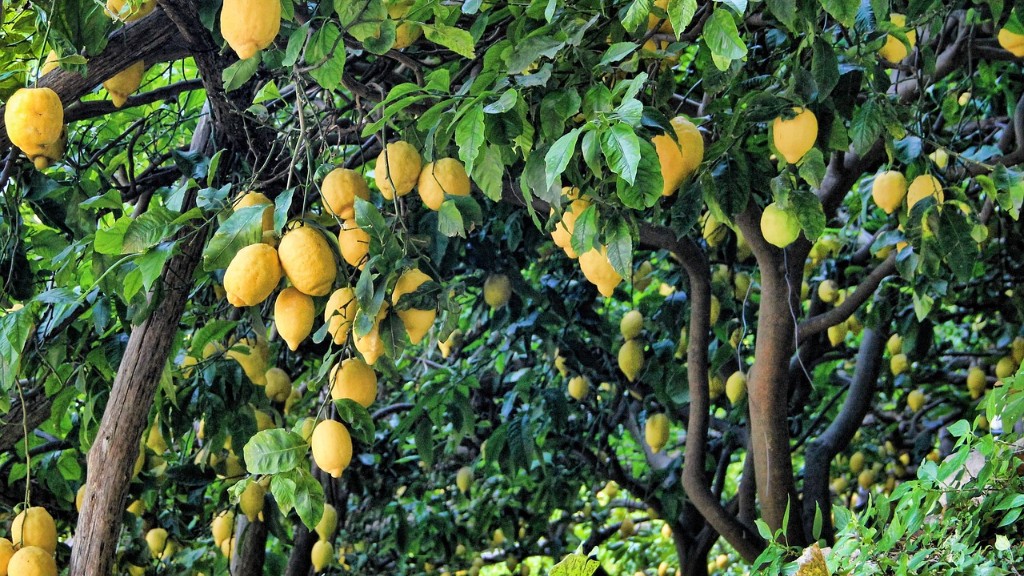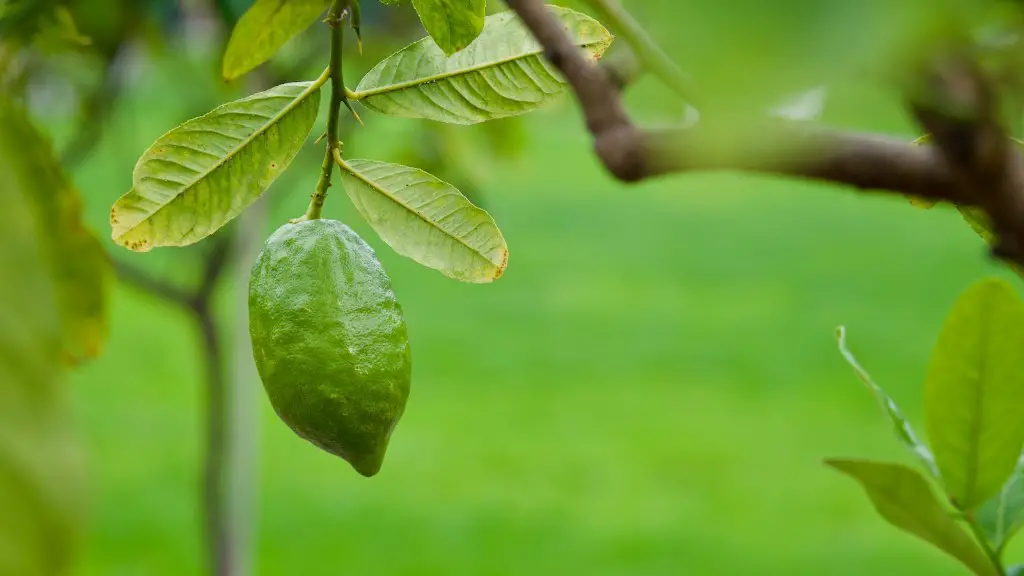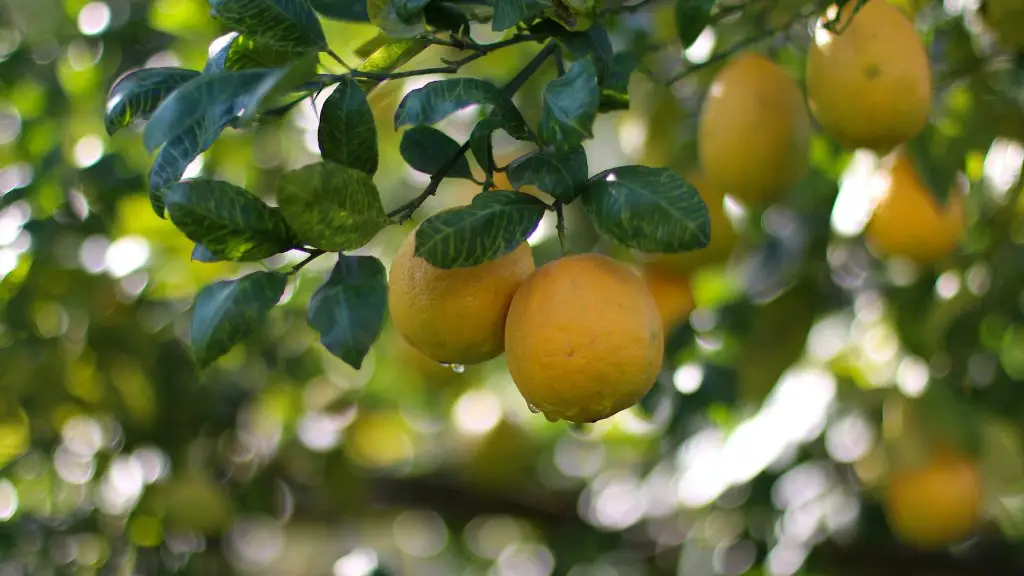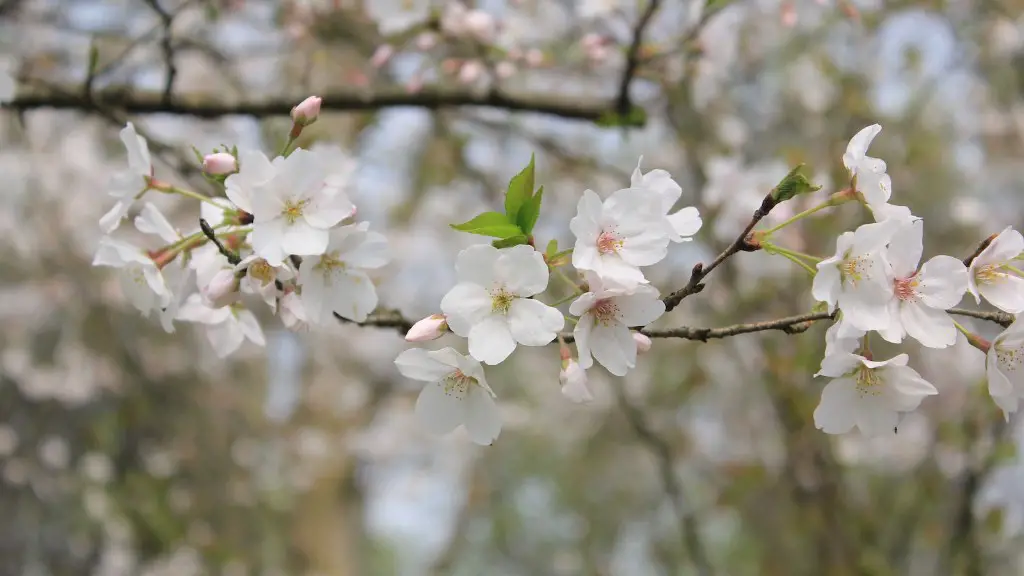Pruning a lemon tree is essential for its overall health. Pruning the tree regularly enables new growth, strengthens branches, and enhances flowering and fruiting. But, it is important to know when the best time to prune a lemon tree is. Luckily, we’re here to help! Here’s a short guide on when you should prune your lemon tree.
Firstly, the best time of year to prune lemon trees is late winter or early spring. During this time, the tree is not actively growing and it’s easier to prune it without damaging delicate new growth. Aim to prune your tree at least once a year and no more than three times a year to maximize its growth potential.
When pruning your lemon tree, it’s best to use sharp bypass shears. This kind of pruning shear is best as they won’t crush stems and leave clean cuts. You want to make sure to remove any dead or diseased branches, as well as any branches that are going in the wrong direction. Additionally, make sure to prune back branches crossing over each other or growing too close together.
It’s also important to pay attention to the sucker growths at the base of the tree. If left unchecked, these can take away vital nutrients that the tree needs in order to produce flowers and fruit. Prune these back regularly and as far as necessary. As well as cutting them off, you should also remove any fallen leaves and debris from around the base of the tree as this can cause disease.
Finally, pruning isn’t the only way to improve health and encourage growth. You should also fertilize your tree with an organic fertilizer a few times a year. Not only will this help promote healthy growth, but it will also increase flower and fruit production.
Pruning Lemon Tree Branches
Branches are an important part of a lemon tree’s regular pruning process. In order to control the height and shape of the tree, it is important to keep the branches pruned. You should look to prune the branches of your lemon tree in early spring, as this allows you to control its shape and size without disrupting any new growth. To prune branches, use sharp bypass shears and make sure to cut away any dead or diseased branches. Additionally, you should remove any branches that are crossing over each other or growing too close together.
When pruning your lemon tree branches, make sure that they are cut back to two bud nodes away from the trunk. This means that you should look to make a 45-degree angle cut just above a pair of buds. This enables new growth to come in a more desirable shape. Additionally, when pruning your branches you should also look to prune out any weak or spindly growth.
Pruning Suckers from the Lemon Tree
Sucker growth can be found at the base of the lemon tree, and in order to maximize the growth potential of your lemon tree, it is important to prune these back regularly. The suckers will take away vital nutrients from the tree, reducing its capacity to produce flowers and fruit. To prune the suckers, simply use sharp bypass shears and snip them off at the base. Make sure you are consistent when pruning the suckers, otherwise they will start to creep back.
Additionally, make sure to remove any fallen leaves and debris from around the base of the trunk. This can attract pests and can cause diseases. It’s important to keep the area beneath kept tidy so that your lemon tree is kept healthy.
Watering and Fertilizing the Lemon Tree
Watering and fertilizing a lemon tree is also important for its overall health. If the lemon tree is not being watered and fertilized regularly, then it will not have the energy it needs to produce flowers and fruit. It is important to keep the soil moist, but not wet or soggy, as too much or too little water can be harmful to the tree. You should water your lemon tree once a week, depending on the climate and the size of the tree.
When fertilizing, it is important to use an organic fertilizer for the best results. An organic fertilizer will help promote healthy growth and will also increase flower and fruit production. Fertilize your lemon tree three to four times a year, always in small doses and never in one go.
Foliar Feeding the Lemon Tree
Another way to encourage healthy growth in a lemon tree is through foliar feeding. This involves spraying the leaves of the tree with a nutrient-rich solution that is taken up directly through the leaves. This method of feeding helps get the nutrients directly to the tree, rather than having to wait for them to be taken up through the roots, so it is a great way to give an extra boost of nutrition to your lemon tree.
Foliar feeding should be done every two or three weeks, and it is important to use the right solution. Make sure to use a water-soluble fertilizer that is designed specifically for foliar feeding. Also make sure not to overfeed the tree as too much fertilized solution can cause leaf damage.
Pest and Disease Control in Lemon Trees
In order to ensure that your lemon tree stays healthy and free from pests and diseases, it is important to keep its environment clean and free from debris. Make sure that you are regularly removing fallen leaves, twigs and any other debris from the base of the tree, as this can cause a build-up of pests and can lead to diseases. Additionally, use insecticidal soap or a neem oil solution to help control pests, and always spray the solution in the early morning or late evening when the sun is down.
It is also important to keep an eye out for signs of disease in your lemon tree. This can include yellow or brown spots on leaves, wilting or drooping of branches, and discoloration of the bark. If you spot any of these signs, make sure to treat the tree as soon as possible with a fungicide or pesticide designed for the specific disease.
In conclusion, pruning a lemon tree is essential for its overall health and its ability to produce flowers and fruit. Pruning regularly enables new growth and strengthens branches. It’s best to prune your lemon tree in late winter or early spring, using sharp bypass shears. Additionally, make sure to keep the environment around the tree clean and free from debris, fertilize regularly and use a water-soluble fertilizer for foliar feeding. Finally, be vigilant in spotting and treating any pests or diseases quickly to keep your lemon tree healthy.




